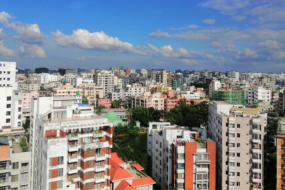Delhi- NCR has emerged as a leader with 67 million sq ft of Grade- A green certified office stock in India. Currently, as much as 44% of country’s Grade-A office stock is green certified and over the next decade, it is set to top 50% mark.
A total of 321 million sq ft of Grade-A office stock is green certified, as of March 2022 in India. This is 43.8% of the total stock of 732 million sq ft spread across seven cities of Mumbai, Delhi NCR, Bengaluru, Chennai, Hyderabad, Pune, and Kolkata. Delhi NCR leads the overall share of green-certified stock in the country with approx. 67 million sq. ft, closely followed by Mumbai with approx. 66 million sq. ft. Collectively, as per JLL report ,Mumbai and Delhi NCR account for 41.2% of the total, green-certified stock in the country.
When it comes to individual city-level penetration of green buildings, Kolkata has the highest penetration level of 59.5% because of a low stock base and Hyderabad comes in at 52%. Bengaluru, Mumbai, Delhi NCR, and Hyderabad are the top four cities in terms of overall Grade-A office stock and account for over 75% of the existing green footprint.
Institutional investors including REITs hold 220 million sq. ft of Grade-A office stock, which is about 30% of the country’s overall office stock. Of this, over 79% or 175 million sq ft is green-certified. Going green has its advantages. There is a 13.2% average rental premium in Green certified IT buildings and a 36.1 % average premium in non-IT buildings.
“There is a marked urgency and focus on setting long-term sustainability goals. Green certifications aid in reducing carbon emissions thus contributing to a better and healthier tomorrow. What is most heartening to see is that occupiers have been driving the shift towards climate-conscious and green buildings. Even in the two-year period immediately preceding the pandemic, the share of gross leasing in green-certified buildings was higher at 53% and rose further to 57% during the pandemic period. This clearly outlines the greater shift underway in occupier preferences for sustainable, green-certified buildings,” says Radha Dhir, CEO and Country Head, India, JLL.
Global firms have shown a greater sustainability focus in their real estate decision-making and thus have been positively skewed in their leasing activity, with 61% of the space leased by them over the past four years in India being in green-certified buildings, according to Nair .
There is a clear rental difference between green and non-green certified buildings. While the average rental premium in green-certified non-IT buildings is 36.1%, the average rental premium for green-certified IT buildings stands at 13.2%.
There is a very clear vacancy polarization in favour of green-certified IT/IT SEZ buildings, irrespective of the age of the projects. “Across all core submarkets in the top seven
cities where IT/IT SEZ projects form a significant proportion of total Grade-A stock, green-certified buildings enjoy higher occupancy compared to non-certified counterparts. Vacancies are lower by 300-1200 bps in green IT/IT SEZ buildings across prominent submarkets. In terms of rental premiums, most submarkets show a brown discounting with green buildings enjoying a 15-54% rental premium,” says. Samantak Das, Chief Economist and Head of research and REIS, JLL, India
India’s Grade-A stock is predominantly of IT/IT SEZ usage, with such projects holding a 71.4% share. The penetration levels of green certification are also significantly higher with 50% of this IT/IT SEZ stock being green certified.
Comparably, non-IT stock only has a 28.2% green penetration. It is, however, imperative to note that such green-certified non-IT stock enjoys an average of 28-40% rental premium in core front office markets. The lower vacancy levels in this green-certified non-IT stock also underline the impact of green certifications on occupiers’ space decisions, more so in the case of their corporate offices which are representative of the firms’ ethos and corporate responsibility statements,” as per Das.
On an overall basis, IT/IT SEZ projects account for 81.5% of all green-certified Grade-A buildings in the top seven cities. Non-IT projects have a lower share in India’s Grade-A stock as they include substantial older stock in cities’ CBDs which is in urgent need of refurbishment and upgradation, including improvements to make it more sustainable.
it is likely that the upcoming supply is green-rated to an extent of 70-75% even as older projects look to upgrade and reduce their carbon footprint. As a result, over the next decade, the penetration levels of green-certified buildings are expected to cross 50% on an overall basis.



